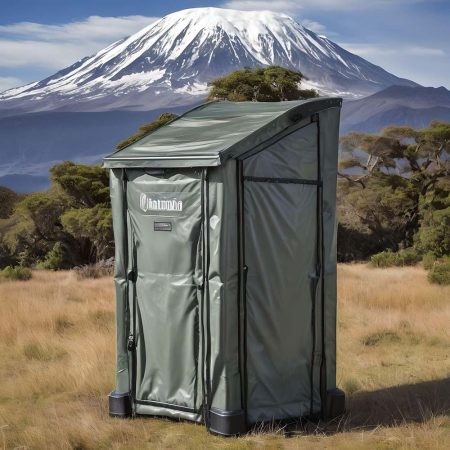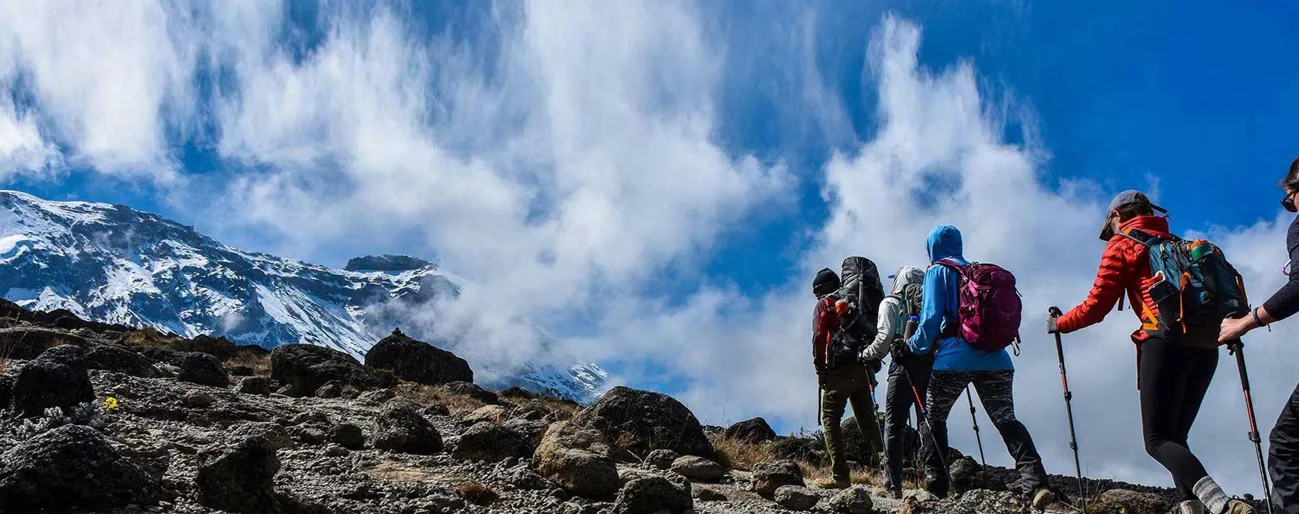Here is our guide to Toilets on Kilimanjaro. Read the text provided below and find out everything you need to know.
In the realm of using restrooms, our expectations are usually centered around comfort and privacy. However, the scenario shifts when you embark on a trek up Mount Kilimanjaro. This article will provide insights into the available toilet facilities on the mountain, spanning from basic campsite setups to options for private portable toilets.
Navigating the Call of Nature – Toilets on Kilimanjaro
First and foremost, let’s ease your concerns. There are public toilets at every campsite along the Kilimanjaro route. Yet, it’s essential to adjust your expectations. Leave aside thoughts of porcelain commodes with lockable doors and sinks equipped with soap dispensers. Picture instead a wooden structure (often lacking a door, let alone a lock) enclosing a deep hole in the ground.
Prepare yourself for squatting and minimal privacy. Although the Kilimanjaro National Park team diligently maintains these facilities, the task is challenging due to the sheer number of climbers using them. Consequently, the odor emanating from Kilimanjaro’s communal ‘long drop’ toilets can be potent, making the experience rather unpleasant and unsanitary.
Is a Private Toilet an Option?
Indeed, we offer “portable private toilets.” These are fully equipped chemical toilets enclosed within their own discreet tent for complete privacy (although not necessarily soundproof). These portable restrooms are reserved exclusively for your group’s use and are set up and accessible solely at the campsite.
The porters, responsible for cleaning, upkeep, and transportation, ensure that your restroom breaks remain hygienic and private.

Addressing Mid-Trek Bathroom Needs – Toilets on Kilimanjaro
For minor needs like urination, a practical solution is to find a private spot behind a tree or bush for a brief moment. Informing your guide can help prevent any awkward encounters. As you ascend beyond the tree line, finding suitable cover becomes more challenging. Larger shrubs may offer privacy, and if not, boulders or rock formations could serve as alternatives.
A more effective strategy is carrying a container to empty at the next campsite. Specialized products like Shewee for women and Peebol for everyone, available on platforms like Amazon, serve this purpose. “Personal toilet” kits designed for events like festivals can also work well for Kilimanjaro treks. Having a container proves useful during the day’s hike and nighttime when leaving the campsite is less appealing.
Dealing with Defecation on the Trail
For defecation needs, locate a secluded area as discussed earlier. Leaving waste behind is unacceptable. Disposable plastic bags can be carried for waste collection. Additionally, having toilet paper and hygienic wet wipes for cleanup is crucial.
Remember: Proper disposal is key. After cleaning up, place everything in a plastic bag (consider using double bags), secure it tightly, and take it to the next campsite. The porters will handle it from there.
How Does a Long Drop Toilet Function?
A long drop toilet, also known as a pit latrine, collects human waste in an underground hole beneath the toilet. It can operate with or without flowing water. The design aims to reduce disease spread and the transfer of pathogens by flies.
Extending the Long Drop
The maximum depth for a long drop toilet’s hole is 1 meter from the ground level. Once the hole is filled up to 330mm, you’ll need to dig a new one. After filling, it’s essential to cover the long drop with soil completely.
If you liked our Toilets on Kilimanjaro: What to Expect, you might also like our What Do You Need to Carry on Mount Kilimanjaro?.


Comment (0)